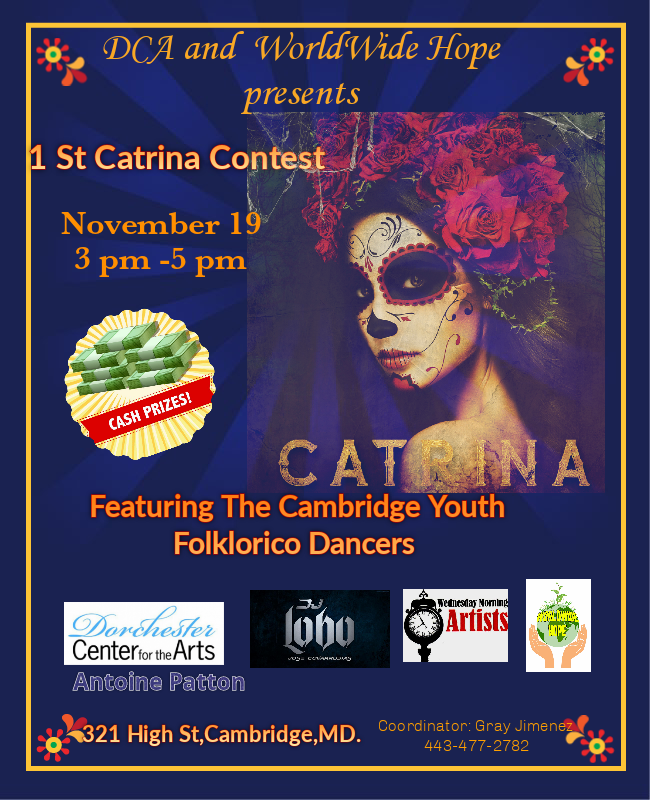
- This event has passed.
Catrina Contest!

DCA and Worldwide Hope present the 1st Cambridge Catrina Contest. This event will feature the Cambridge Youth Folklorico Dancers.
One of the most recognized characters associated with Dia de los Muertos is La Catrina. At Dia de los Muertos festivities throughout the Americas, you see young and old, painting their faces to look like calaveras de azúcar, or sugar skulls. La Catrina has become the preeminent symbol of the afterlife and is la grand dame of all Dia de los Muertos festivities.
The Day of the Dead (el Día de los Muertos), is a Mexican holiday where families welcome back the souls of their deceased relatives for a brief reunion that includes food, drink and celebration. A blend of Mesoamerican ritual, European religion and Spanish culture, the holiday is celebrated each year from October 31-November 2. While October 31 is Halloween, November 2 is All Souls Day or the Day of the Dead. According to tradition, the gates of heaven are opened at midnight on October 31 and the spirits of children can rejoin their families for 24 hours. The spirits of adults can do the same on November 2.
The roots of the Day of the Dead, celebrated in contemporary Mexico and among those of Mexican heritage in the United States and around the world, go back some 3,000 years, to the rituals honoring the dead in pre-Columbian Mesoamerica. The Aztecs and other Nahua people living in what is now central Mexico held a cyclical view of the universe, and saw death as an integral, ever-present part of life.
The iconic Catrina figure was first imagined by Mexican artist and printmaker, José Guadalupe Posada. First appearing around 1910, La Calavera Catrina depicts a female skeleton adorning a fancy European style hat. Posada’s creation was a satirical commentary on native Mexican women, who, in Posada’s opinion, were neglecting and even willfully choosing to forget their Mexican heritage in pursuit of a wealthy, upper-class, European lives. Clearly a political statement at the time, La Calavera Catrina and the leaflet she first appeared on has evolved into a symbol of lasting cultural significance, especially as related to Dia de los Muertos.
Placed on altars and sold at festivals and events, La Catrina and other skeleton figures made of wood, paper, clay, and even cornhusks are depicted acting out any number of activities. Whether dancing, going out on the town, or enjoying a glass of wine, the figures remind us that life is indeed a part of death, something we will all experience, and is most certainly nothing to be feared. La Catrina and her skeletal friends remind us that Dia de los Muertos is a holiday of sacred remembrance and festive celebration.
More information, contact event coordinator Gray Jimenez at 443-477-2782.
